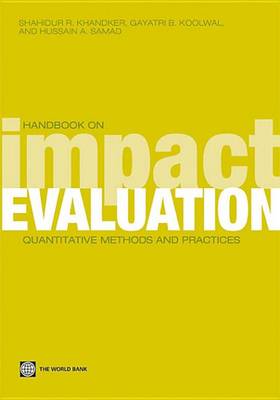Public programs are designed to reach certain goals and beneficiaries. Methods to understand whether such programs actually work, as well as the level and nature of impacts on intended beneficiaries, are main themes of this book. Has the Grameen Bank, for example, succeeded in lowering consumption poverty among the rural poor in Bangladesh? Can conditional cash transfer programs in Mexico and Latin America improve health and schooling outcomes for poor women and children? Does a new road actually raise welfare in a remote area in Tanzania, or is it a 'highway to nowhere'?
This book reviews quantitative methods and models of impact evaluation. It begins by reviewing the basic issues pertaining to an evaluation of an intervention to reach certain targets and goals. It then focuses on the experimental design of an impact evaluation, highlighting its strengths and shortcomings, followed by discussions on various non-experimental methods. The authors also cover methods to shed light on the nature and mechanisms by which different participants are benefiting from the program.
For researchers interested in learning how to use these models with statistical software, the book also provides STATA exercises in the context of evaluating major microcredit programs in Bangladesh, such as the Grameen Bank. The framework presented in this book can be very useful for strengthening local capacity in impact evaluation among technicians and policymakers in charge of formulating, implementing, and evaluating programs to alleviate poverty and underdevelopment.
- ISBN10 082138029X
- ISBN13 9780821380291
- Publish Date 14 May 2014 (first published 30 October 2009)
- Publish Status Active
- Publish Country US
- Imprint World Bank Publications
- Format eBook
- Pages 262
- Language English
